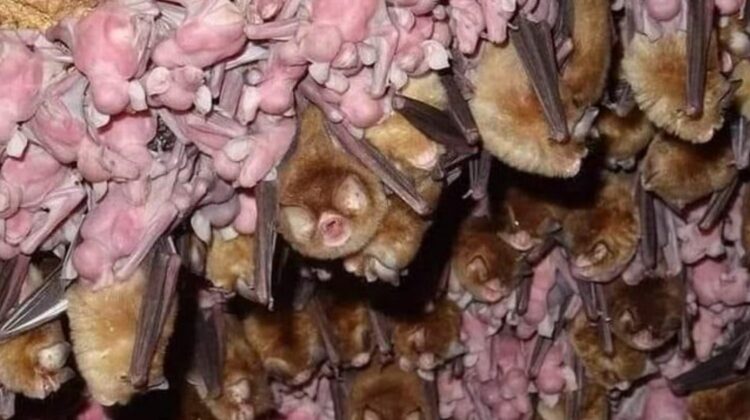
Deep within a hidden cave, shrouded in perpetual twilight, a symphony of high-pitched chirps and squeaks fills the air. Here, nestled amongst the cool, damp walls, lies a remarkable sight: a bat nursery. Hundreds of tiny, helpless creatures cling upside down, their delicate bodies wrapped in a protective embrace by their mothers.
These are the young of the Mexican greater funnel-eared bat (Natalus mexicanus). Unlike the sleek, aerodynamic adults, these newborns are a stark contrast. Completely hairless and blind, they appear vulnerable and fragile. Yet, a closer look reveals a fascinating adaptation – even in this early stage, they instinctively know how to hang upside down, clinging with tiny claws to their mothers’ fur.

Their home is a far cry from the average nursery. These bats prefer “hot caves,” subterranean havens with near 100% humidity and temperatures that soar to a toasty 40°C (104°F). This tropical environment is crucial for the development of the young.
Imagine a mother Mexican free-tailed bat, a creature no bigger than two inches long, cradling a pup the size of an almond in the shell. These tiny pink newborns are completely dependent on their mothers for warmth, food, and protection. But their remarkable growth is swift. Within four weeks, a soft, silver-toned fur begins to blanket their bodies. By six weeks, they’re fully furred, their eyes open to the world, and their tiny bodies begin developing the strength needed for flight.

The transformation continues. By twelve weeks, these once helpless pups have reached their adult size. Their wings, once folded tightly against their bodies, unfurl, and they take their first tentative flights under the watchful gaze of their mothers. Soon, they will join the ranks of their colony, becoming skilled predators within the night sky.
Each bat in this nursery holds the potential to be an insect-munching champion. Their nightly feast consists of a staggering 3,000 to 5,000 flying insects, including flying ants, termites, moths, beetles, and even pesky mosquitoes. These incredible creatures are not just effective pest controllers; with a lifespan stretching 15 to 20 years, they demonstrate surprising intelligence. Their complex communication system boasts over 25 distinct vocalizations, and some evidence even suggests that they may utilize a form of syntax, a skill previously thought to be exclusive to some primates and birds.

The bat nursery is a hidden world, teeming with life and fascinating adaptations. From the helpless newborns to the skilled insect hunters they become, these remarkable creatures play a vital role in our ecosystem, reminding us of the wonders that exist just beyond the veil of the everyday.

Leave a Reply